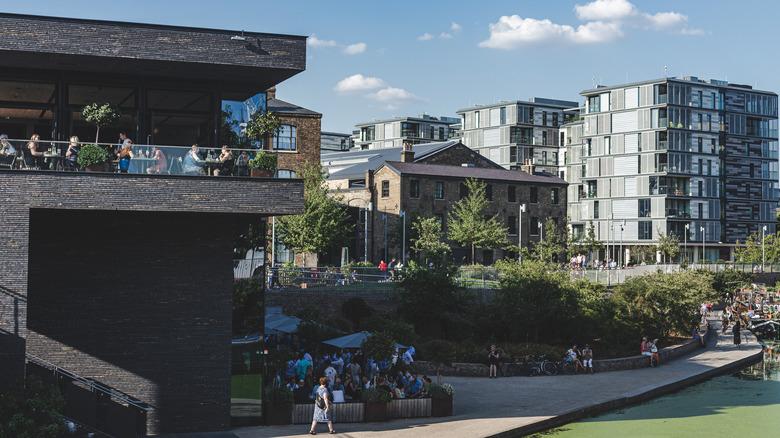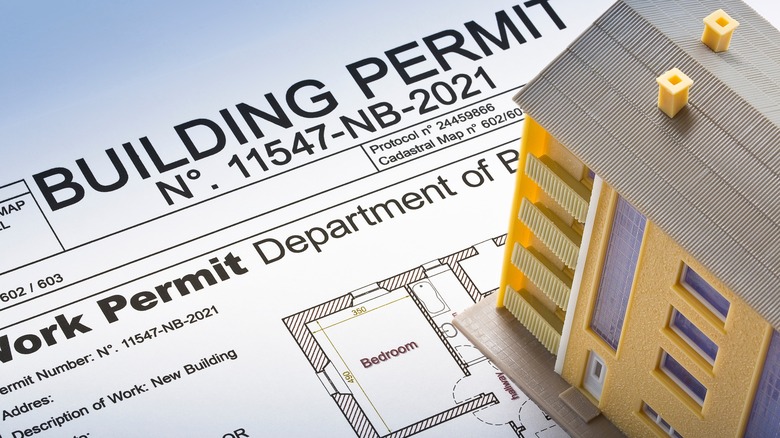What To Know Before Converting A Commercially-Zoned Property Into Residential
Amidst rising commercial vacancies and an escalating housing crisis, converting a commercially zoned property into a residential one seems appealing. That way, you save on the fixed costs of maintaining a vacant property while generating rental incomes — and maybe even improve the footfall for office-adjacent local businesses. Unfortunately, the process isn't a simple matter of turning lemons into lemonade, given the plethora of legal, logistical, and financial complications. To make this undertaking successful, you must navigate the complex layers of zoning regulations, building codes, and permit requirements.
But before embarking on the endeavor, ensure the commercial-to-residential conversion makes sense. Families require a host of amenities, such as grocery stores, schools, gyms, and more, at most a few streets away, which may not always be possible in commercial zones. This could impact rental demand and rates unfavorably, nullifying the benefits of taking the plunge. So, consult with real estate professionals and architects to gain insights into the current market dynamics and expected trends before deep-diving into the legalities.
Research the zoning requirements
Whether the commercial-to-residential conversion will go smoothly depends on how the municipality classifies your neighborhood. For instance, living in a 'mixed-use zoning area'—where residential and commercial properties co-exist—affords you the benefit of not applying for any approvals. Similarly, NYC residents take advantage of the 'residential equivalents' rule, which allows them to switch the property's character in their commercial zones on an 'As of Right' basis. Likewise, California has done away with the necessity of getting the local government's permission to establish residences on commercial land (also called 'adaptive reuse'), provided a certain housing percentage is affordable.
But if the zoning laws only allow commercial usage, you must apply for zoning variance or rezoning. A zoning variance is an exception to the current laws, where the local government considers your case for a fee. The process entails filing the requisite documentation, presenting your case in a council meeting, and waiting out the comment period for a decision. You may have to cough up extra dollars for an environmental impact or traffic study, too. Worse, you might get stonewalled if the council believes approving your case will dampen the property values. Alternatively, you can file a petition for rezoning with your municipality's building department after rendering property information. You may also be required to issue a public notification and sit through a public hearing. Approval isn't guaranteed, but you can appeal your case or file a lawsuit if necessary.
Comply with building codes, obtain permits, and account for renovation expenses
Since commercial and residential properties serve different purposes, their building codes— rules for building on your property — also differ. This implies you must undertake major renovations to adhere to the residential standards, which can get expensive (assuming it's possible). For example, NYC demands a 20-foot rear yard in its commercial properties but 30 feet for their residential counterparts, making the conversion challenging. Interestingly, it's harder to convert modern estates than pre-war buildings, as they have bigger floor plates and inoperable windows. This presents difficulties, as a residential property requires egress windows, without which the rooms cannot be considered safe, nor can they be carved out easily in line with the natural light and air requirements.
Plumbing, drainage, and electrical changes are indispensable, too. After all, no homeowner would entertain using a row of common bathrooms. Other additions like kitchen equipment, window systems, common corridors, HVACs, and lounges are equally essential. Plus, you'll have to redo the elevator access. Worse, such changes can't be made without navigating the long-winded process of renovation permits. These demand formal plans, which must align with the local rules. To illustrate, hurricane-prone regions have higher wind-load requirements, while the seismic standards are stricter on the West Coast. As you can imagine, this raises the costs exponentially, effectively becoming a deal-breaker for some, although the equation might balance if you're confident about increasing rents by over 15%.


